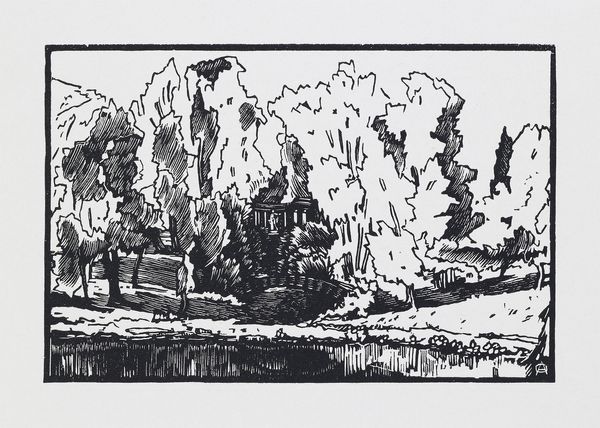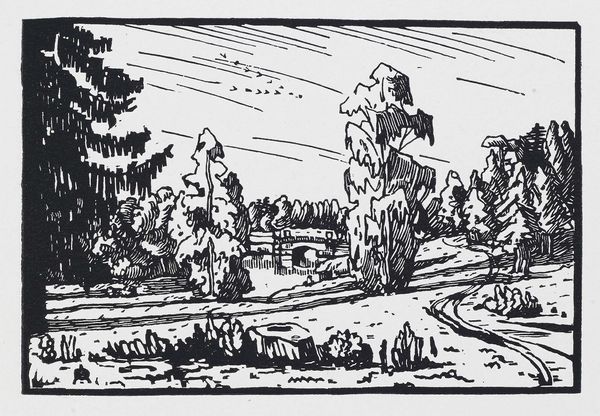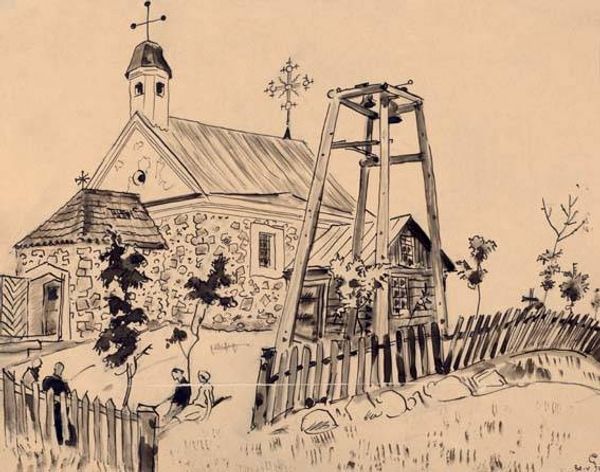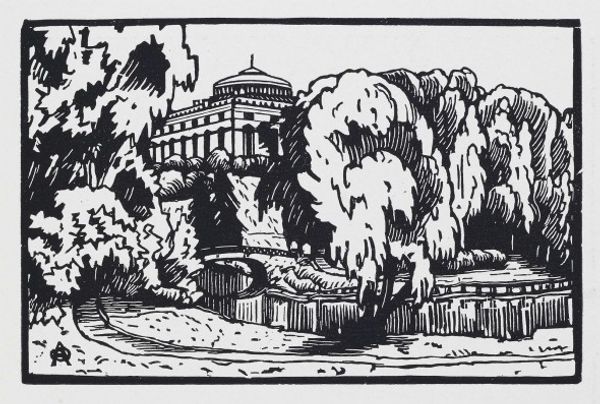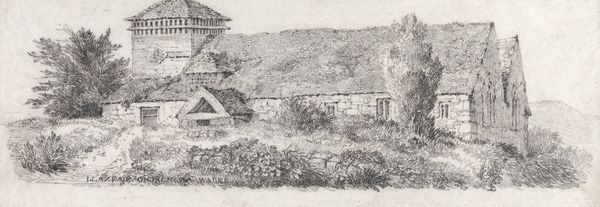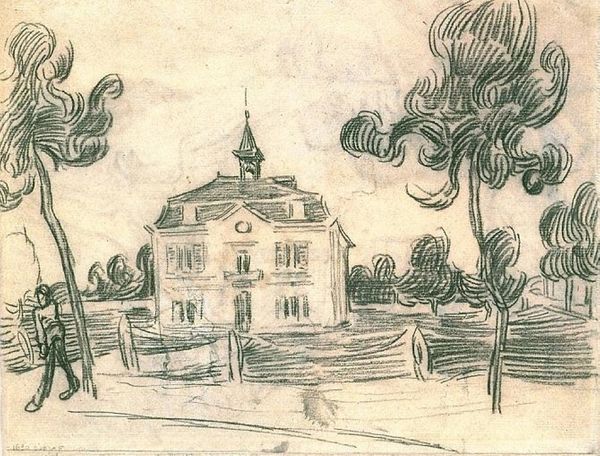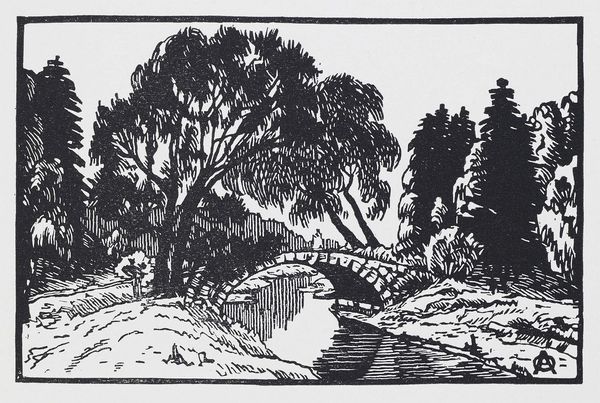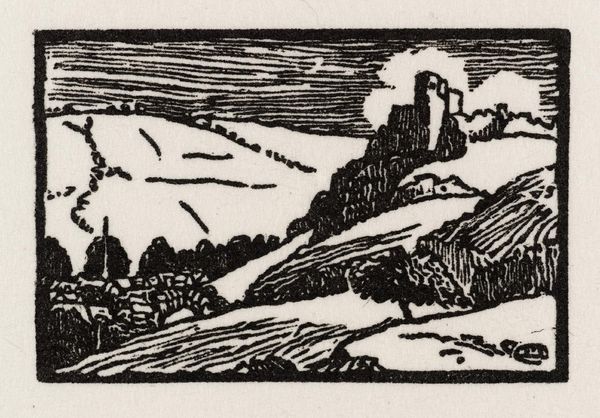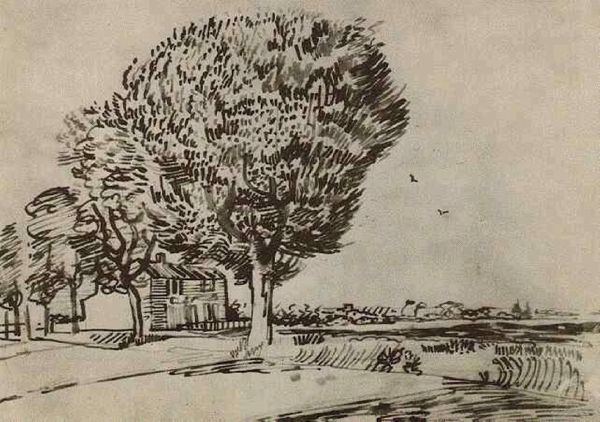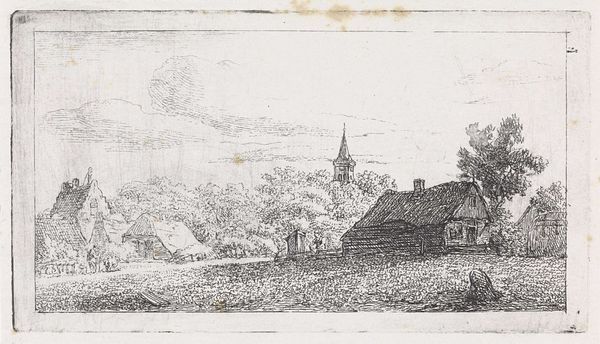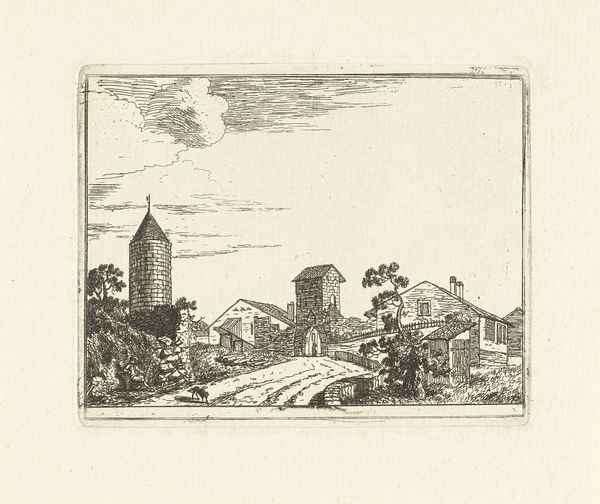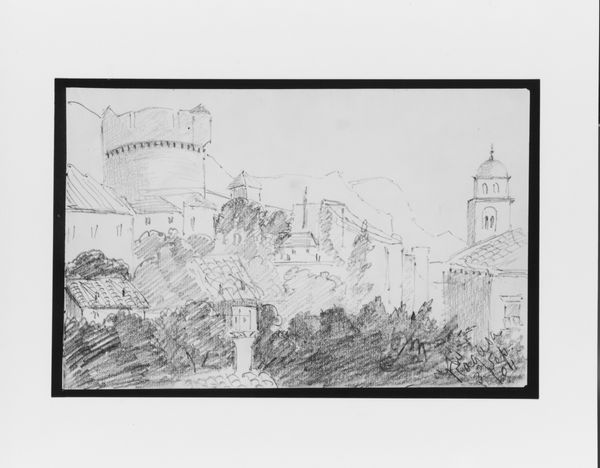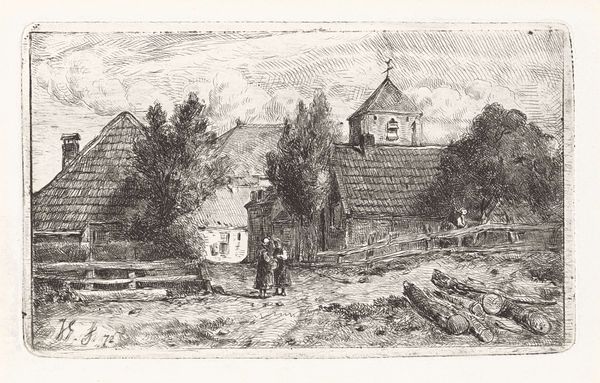
drawing, print, etching, ink
#
drawing
#
medieval
# print
#
etching
#
landscape
#
ink line art
#
ink
Copyright: Public domain US
Editor: This is Anna Ostroumova-Lebedeva's "Fortress 'Beep'," created in 1922. It looks like an etching or print of a fortress atop a hill, and what strikes me is the strong contrast between the stark black lines and the white paper. What catches your eye when you look at this work? Curator: Primarily, I’m drawn to the structural composition. Notice how the fortress, centrally positioned, acts as a vertical anchor against the horizontal landscape. The lines, rendered in ink, vary in thickness and density, creating a sense of depth and texture. Consider the semiotics of line itself here. Editor: Semiotics of line? Curator: Indeed. Thicker lines define the foreground, particularly the water's edge, while finer lines delineate the distant sky and the architectural details of the fortress. These lines function as signs, guiding our eye through the spatial arrangement. Also observe the use of negative space, where the absence of ink contributes to the overall balance and harmony. It invites contemplation about form. What feeling is invoked in you as you look at it? Editor: I hadn’t thought of the lines in that way! For me, it evokes a feeling of quiet solitude, a medieval-era fairytale maybe. Even the slight sketchiness adds a bit of mystery. Curator: Precisely. Consider too, how Ostroumova-Lebedeva plays with perspective. It is flattened, not adhering to strict rules of linear perspective, thereby emphasizing the two-dimensional nature of the print itself. We observe, too, a dynamic interplay between the geometric forms of the fortress and the organic shapes of the surrounding landscape. Editor: It’s interesting to consider how she's highlighting the medium itself and deconstructing perspective. I am used to considering historical context, so focusing on lines as signs feels so different, but useful. Curator: Indeed. By reducing the scene to its essential elements – line, form, and spatial relationships – Ostroumova-Lebedeva invites us to appreciate the intrinsic qualities of the artwork itself. Editor: I never really thought about landscapes in terms of formalism before; I learned a lot. Thanks for broadening my views!
Comments
No comments
Be the first to comment and join the conversation on the ultimate creative platform.
